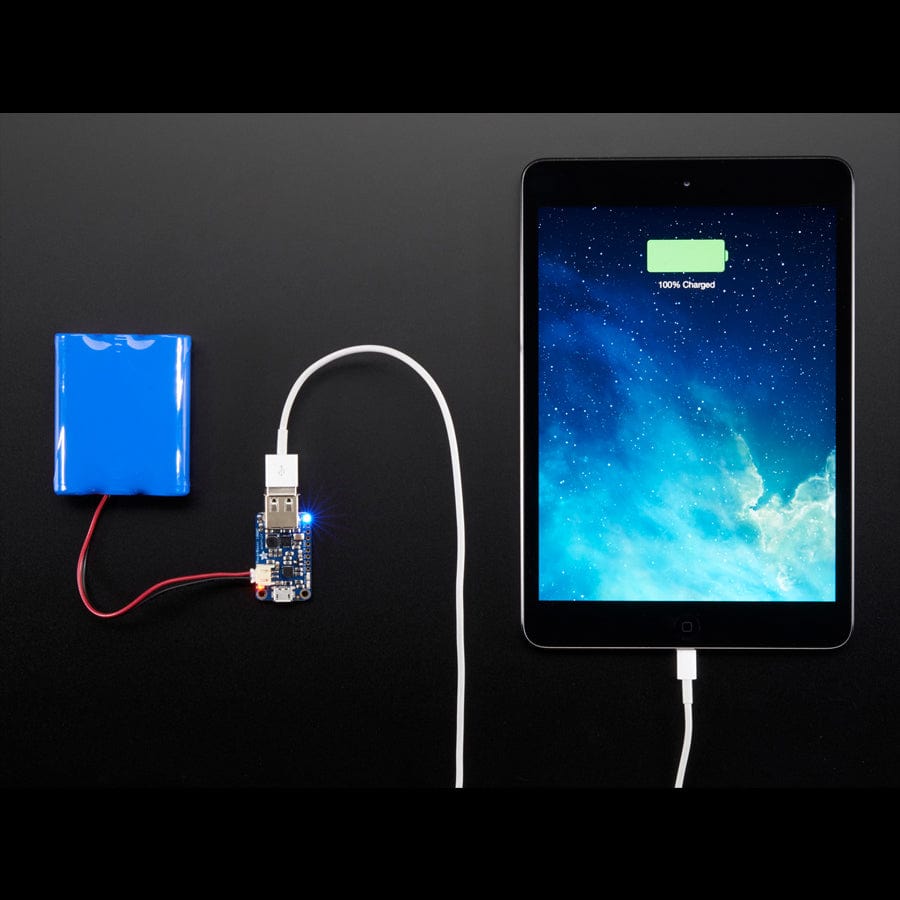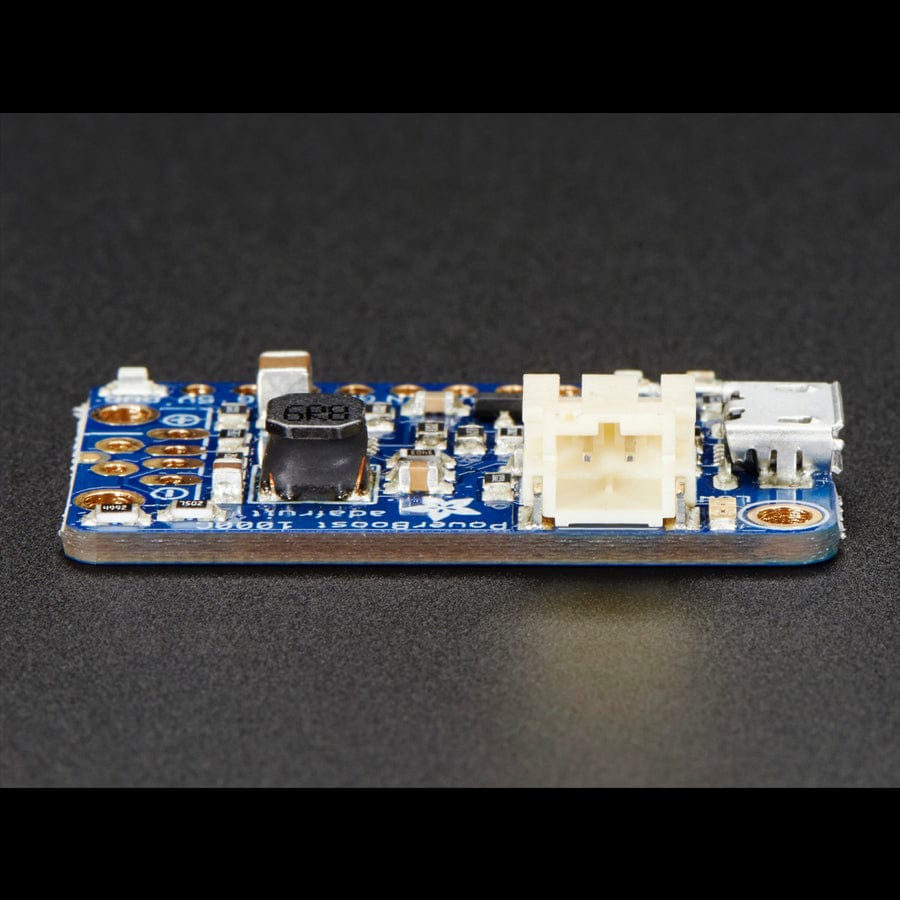







Login / Signup
Cart
Your cart is empty








The Adafruit PowerBoost 1000C is a compact 5V power supply and LiPo charger in one — perfect for portable projects and DIY UPS systems. Powered by a 3.7 V LiIon/LiPoly battery, it boosts output to a steady 5.2 V DC and supports load sharing, so your project runs even while charging.
PowerBoost 1000C is the perfect power supply for your portable project! With a built-in load-sharing battery charger circuit, you'll be able to keep your power-hungry project running even while recharging the battery! This little DC/DC boost converter module can be powered by any 3.7V LiIon/LiPoly battery, and convert the battery output to 5.2V DC for running your 5V projects.
If you don't need the 1A battery charger, smart load-sharing, or 1A iOS resistors, check out the Powerboost 500C.
Like our popular 5V 1A USB wall adapter, we tweaked the output to be 5.2V instead of a straight-up 5.0V so that there's a little bit of 'headroom' for long cables, high draw, the addition of a diode on the output if you wish, etc. The 5.2V is safe for all 5V-powered electronics like Arduino, Raspberry Pi, or Beagle Bone while preventing icky brown-outs during high current draw because of USB cable resistance.
The PowerBoost 1000C has at the heart a TPS61090 boost converter from TI. This boost converter chip has some really nice extras such as low battery detection, 2A internal switch, synchronous conversion, excellent efficiency, and 700KHz high-frequency operation.
To make this even more useful, we stuck a smart load-sharing Lipoly charger on the other side. The charger circuitry is powered from a microUSB jack, and will recharge any 3.7V/4.2V LiIon or LiPoly battery at 1000mA max rate. There are two LEDs for monitoring the charge rate, a yellow one tells you it's working, a green one lights up when it's done.
Since the built-in battery charger has load-sharing, it will automatically switch over to the USB power when available, instead of continuously charging/draining the battery. This is more efficient, and lets you charge-and-boost at the same time without any interruption on the output, so it's fine for use as a "UPS" (uninterruptible power supply). Please note that this board is designed to be used only with a LiPoly attached, it won't work without a battery.
Just be aware that the charge rate is 1000mA max, and there's some inefficiency during the boosting stage, so make super sure that the USB adapter you're using to charge with is high quality, can supply 2A and has thick power wires. This one from Adafruit is ideal and has been tested, lower quality ones will not act well due to the voltage drop on the wires or droop on the power supply. This is especially true if you're actually drawing 1000mA out of the PowerBoost 1000C, the MCP73871 maxes out at 1.8A. You do have to always have a LiPo plugged into manage the load spikes, it's not optional!
This charger-booster is great for powering your robot, Arduino project, single-board-computer such as Raspberry Pi or BeagleBone! Each order comes with one fully assembled and tested PCB and a loose USB A jack. If you are powering your project from USB, solder the USB A jack in (a 3-minute soldering task). If you would like to use a terminal block, pick up a 3.5mm 2pin block here and solder to the output spot where the USB jack would go. Or don't solder anything in for a more compact power pack.
If you're trying to figure out how much current your project is using, check out the USB voltage meter with OLED display!
Please note, you may get an off-white or black JST connector.


















